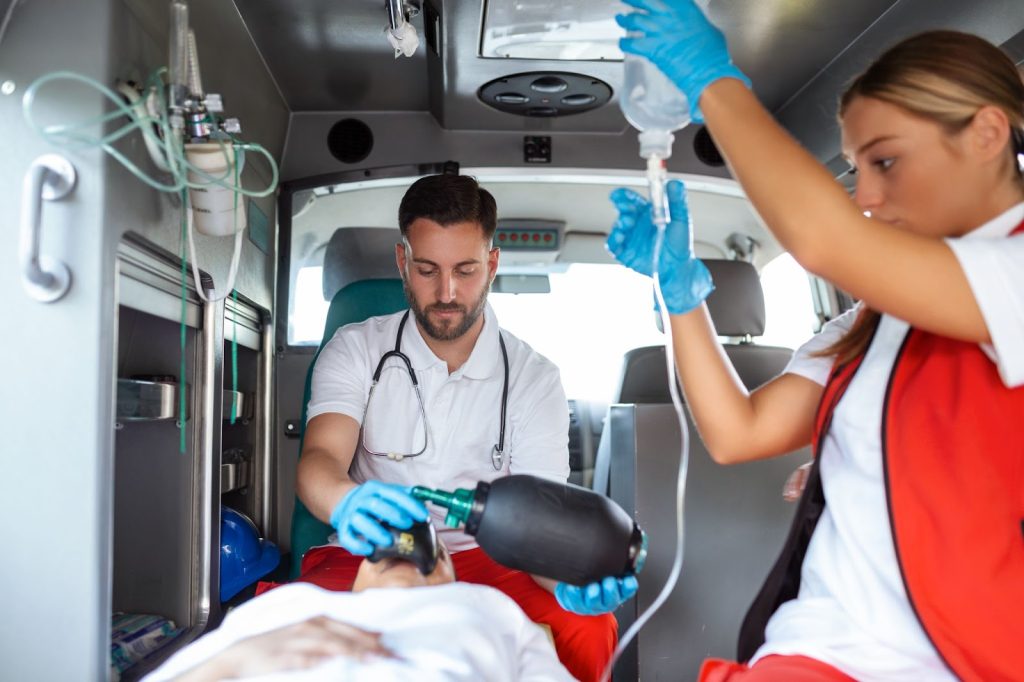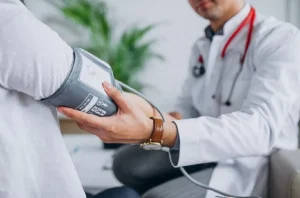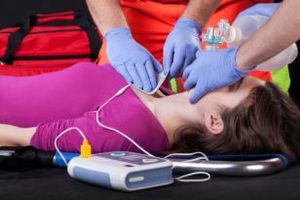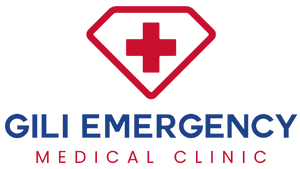Close your eyes and imagine this: you’re on the Gili Islands, toes buried in soft white sand, sipping fresh coconut water, reggae beats humming in the background. Life feels perfect—until it isn’t. Maybe you slip on a bike, cut your foot on sharp coral, or worse, have a diving accident. In that split second, all you’ll think is: how fast can ambulance Gili services actually reach me?
Good question, right? The Gilis are car-free (which is amazing for the vibe), but that also makes emergency services a little different than what you might expect back home. Let’s talk about how Gili emergency service works, how quick the Gili medical service response time really is, and what travelers need to know to stay safe in paradise.
Why Ambulance Response Time in the Gili Islands is Different
Here’s the deal: the Gili Islands (Trawangan, Air, and Meno) are small, laid-back, and totally car-free. That’s the magic. But it also means you won’t see traditional ambulances zooming around with flashing lights.
Instead, things work a little differently here:
-
No regular ambulances – Emergency staff use electric carts, bicycles, or even stretchers to reach you.
-
Boat transfers matter – For anything serious, you’ll be evacuated by speedboat ambulance to Lombok.
-
Island size helps – Clinics are never too far. On-island response is actually fast, but full hospital access takes longer.
So when we say “ambulance response time” here, we’re talking about two steps: quick help on the island + the longer journey to Lombok or Bali if it’s critical.
Ambulance Gili: What Happens If You Call for Help
Let’s break it down—what actually happens if you need medical help in the Gilis?
-
Initial Response
-
Call for help, and a medic from the nearest clinic heads your way on an electric cart.
-
Thanks to the islands being tiny, they usually reach you within 5–10 minutes.
-
-
On-the-Spot Treatment
-
Basic first aid: wound care, IV fluids, oxygen, injections.
-
Diving issues? They’ve got oxygen kits ready to go.
-
-
Evacuation if Needed
-
If it’s serious, you’ll be transferred by speedboat ambulance to Lombok in about 20–40 minutes (depending on the sea).
-
From Bangsal Harbor, a road ambulance gets you to a hospital in another 30–60 minutes.
-
Quick help on the island is solid—but yeah, for advanced care, it’s a bit of a journey.
Gili Emergency Service: The Reality of Island Response
Now you’re probably thinking, “Okay, but how reliable is this?” Honestly, the Gili emergency service system is better than most people expect.
-
Clinics on each island – Gili Trawangan has the most, but Gili Air and Meno also have 24/7 medical posts.
-
Dive shops as backup – Many dive centers are trained for emergencies and carry oxygen tanks.
-
24/7 coordination – Need a speedboat at 3 AM? No problem. Local captains are always on standby for medical evacuations.
The only wildcard? Bad weather. If the sea is rough, transfers can be delayed. That’s why having travel insurance that covers evacuation isn’t optional—it’s a must.
Gili Medical Service: What Care Can You Expect Locally?
Here’s the honest truth: the Gili medical service isn’t some mega-hospital with MRI machines. But it’s solid for the common stuff tourists face.
Here’s what local clinics can do:
-
Stitch up cuts (coral cuts happen all the time).
-
IV drips for dehydration or heatstroke.
-
Food poisoning treatments.
-
Allergy injections & asthma care.
-
Oxygen for divers.
-
Temporary fracture stabilization.
Think of it this way: the clinics are your stabilization station. They’ll get you safe and steady, then arrange transfer if you need more advanced care.
Personal Story: When Minutes Matter
Here’s one for you. My buddy Liam once fainted after snorkeling off Gili Meno. Too much sun, not enough water. Locals carried him on a cart to the nearest clinic in less than 10 minutes. He got an IV drip, and within an hour he was laughing again (and sipping coconut water instead of beer).
He told me later, “Honestly, I thought I was screwed. But they showed up faster than I expected. I felt safe—even in the middle of nowhere.”
That’s the vibe here: simple but effective.
How to Be Prepared as a Visitor
Alright, let’s get practical. Nobody wants drama on their trip, but being prepared makes a huge difference.
-
Save emergency numbers the second you arrive.
-
Know where the nearest clinic is—don’t wait until you need it.
-
Get proper travel insurance with medical evacuation coverage.
-
Hydrate & pace yourself—heat and alcohol are the top culprits for emergencies.
-
Don’t ignore symptoms—better to get checked early than risk it.
Prepared = peace of mind.
So, How Fast Is the Ambulance Response Time in Gili?
Here’s the quick breakdown:
-
On the island: 5–15 minutes for help to reach you.
-
To Lombok hospital: 20–40 minutes boat ride + 30–60 minutes road ambulance.
-
To Bali (worst case): several hours, unless you arrange a private medevac flight.
So yeah, on-island help is quick, but advanced care takes longer. That’s island life.
Final Thoughts on Gili Islands Ambulance Response Time
The Gili Islands are paradise—but even paradise has its challenges. The good news? Ambulance Gili services, Gili emergency service, and Gili medical service providers are efficient, fast, and know exactly what to do when something goes wrong.
Sure, it’s not the same as calling 911 in a city, but you’ll be surprised at how quickly local teams respond, stabilize, and arrange transfers if needed.
So go ahead—swim with turtles, dance barefoot, sip that sunset cocktail. Just know that even if something happens, the Gilis have your back.











